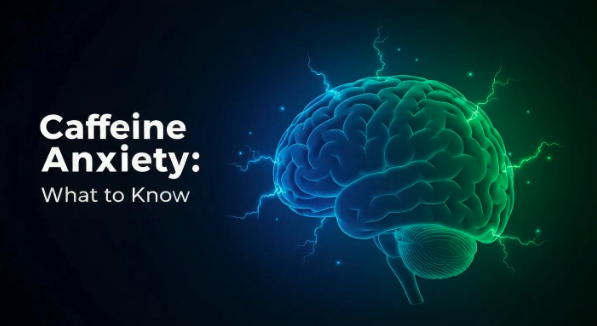The role of mindfulness techniques in therapy sessions
Harnessing Present-Moment Awareness for Therapeutic Success

Understanding the Integral Role of Mindfulness in Psychotherapy
In recent decades, mindfulness has established itself as a cornerstone of effective psychotherapy, integrating ancient contemplative practices with modern psychological techniques. Its inclusion in therapy sessions enhances emotional regulation, fosters self-awareness, and alleviates symptoms of various mental health disorders. This article explores the multifaceted role of mindfulness in therapy, detailing techniques, scientific evidence, therapeutic approaches, and biological underpinnings, aiming to elucidate its profound impact on mental health treatment.
Fundamental Purpose of Mindfulness in Therapy
What is the general purpose of mindfulness in therapy during sessions?
Mindfulness in therapy serves to help clients develop a deep awareness of their current experiences, including thoughts, feelings, sensations, and surroundings. This heightened present-moment consciousness allows individuals to identify unhelpful thought patterns and emotional reactions.
By recognizing these patterns, clients can begin to respond more thoughtfully and effectively rather than reacting impulsively or habitually. For example, instead of immediately reacting with anger or fear, a mindful person might acknowledge these feelings without judgment, creating space for a more balanced response.
Practicing mindfulness also fosters acceptance of one's experiences. Acceptance promotes a sense of calm and reduces stress, anxiety, and distress. When clients learn to accept their emotions and thoughts without criticism, they cultivate greater self-compassion and emotional resilience.
This process enhances overall self-understanding, helping clients see their reactions in context and develop healthier coping skills. The goal is to encourage a mindset of kindness toward oneself and reactivity management.
In essence, the core aim of mindfulness in therapy is to promote living in the present moment, which can significantly improve mental health outcomes. It encourages self-awareness, emotional regulation, and acceptance—foundations for greater wellbeing, resilience, and personal growth. Through regular practice, therapy clients often find they can handle life's challenges with more clarity, patience, and compassion.
Overall, mindfulness aims to reduce suffering by addressing the root causes of distress, helping individuals to respond skillfully to internal and external events, leading to improved emotional health and a more balanced life.
Mental Health Benefits of Mindfulness Techniques
What are the benefits of mindfulness techniques for mental health treatment?
Mindfulness practices have become a widely accepted approach in mental health treatment, offering numerous positive effects. Research supports their ability to reduce symptoms of stress, anxiety, and depression. Meta-analyses demonstrate that mindfulness techniques can significantly alleviate worries and depressive feelings by helping individuals become aware of their thoughts without judgment.
These practices also enhance emotional regulation and cognitive flexibility. For example, by practicing mindfulness, patients learn to observe their emotional responses and reframe negative thought patterns, which promotes healthier coping strategies. This ability to manage intense emotions is crucial in conditions like anxiety disorders, OCD, and mood disorders.
Furthermore, mindfulness techniques strengthen attention, working memory, and focus. Regular practice can lead to improved concentration and mental clarity, helping individuals respond more adaptively to daily stressors and reducing the tendency for rumination. This improved focus is beneficial not only for symptom relief but also for overall mental resilience.
In addition to helping patients, incorporating mindfulness into therapy enhances the therapeutic relationship itself. It fosters greater empathy and compassion between therapists and clients, promoting a safe and trusting environment. Therapists practicing mindfulness may also experience reduced burnout and increased presence, which can further improve therapy outcomes.
Overall, mindfulness supports a comprehensive approach to mental health by targeting core symptoms while promoting resilience, self-awareness, and emotional well-being. Its versatility allows it to complement various therapeutic models, making it a valuable tool in mental health treatment.
| Benefit | Description | Evidence & Impact |
|---|---|---|
| Symptom Reduction | Decreases stress, anxiety, depression | Meta-analyses and clinical trials show effectiveness |
| Emotional Regulation | Enhances ability to manage intense feelings | Improves resilience in mental health conditions |
| Cognitive Flexibility | Promotes adaptive thinking and responses | Reframes negative thought patterns |
| Attention & Focus | Strengthens concentration and memory | Leads to better daily functioning |
| Empathy & Compassion | Builds stronger therapist-client relationships | Improves therapy engagement and outcomes |
Purpose and Therapeutic Role of Mindfulness

What is the purpose of mindfulness in therapy?
The primary goal of mindfulness in therapy is to cultivate a heightened awareness and acceptance of thoughts, feelings, and bodily sensations. This practice encourages clients to observe their internal experiences without judgment, fostering a sense of openness and curiosity.
By developing this nonjudgmental awareness, clients can better regulate their emotions and reduce stress. Mindfulness helps individuals explore different aspects of themselves, providing insights into their reactions and patterns. It acts as a neutral lens through which clients can reflect on their internal world without automatic judgment or reactivity.
In practice, mindfulness techniques such as breathing exercises, body scans, grounding methods, and meditation are integrated into therapeutic sessions. These techniques support clients in increasing their self-awareness, which enhances emotional resilience and facilitates recovery from various mental health conditions.
Research underscores the effectiveness of mindfulness as a component of evidence-based treatments. For example, a 2022 study published in JAMA Psychiatry found mindfulness comparable in efficacy to medication for managing anxiety disorders. This reinforces the therapeutic value of mindfulness as a long-term, sustainable intervention.
It is important to recognize that mindfulness is an ongoing process, not a quick fix. It requires consistent practice and skilled guidance from trained professionals, especially when working with clients who have trauma or sensitive experiences. Properly integrated, mindfulness supports emotional regulation, fosters greater acceptance, and aligns with broader mental health goals, making it a vital tool within various psychotherapeutic approaches.
Implementing Mindfulness: Techniques and Exercises in Therapy
What are the techniques and exercises used to implement mindfulness in therapy?
Therapists use a diverse set of mindfulness techniques in clinical settings to help clients become more present and aware of their internal experiences. Formal practices such as body scan meditation involve systematically focusing attention on different parts of the body, promoting relaxation and awareness of physical sensations. Sitting meditation emphasizes observing breath and thoughts in a quiet environment, fostering calmness and concentration.
Walking meditation encourages mindfulness during movement, where clients pay close attention to their gait and surroundings. These structured exercises grounded in practices like Mindfulness-Based Stress Reduction (MBSR) are designed to anchor attention to the present moment.
In addition to formal exercises, informal practices enable clients to incorporate mindfulness into everyday life. Examples include mindful eating—paying full attention to the taste, texture, and sensations of food—and sensory awareness activities that involve consciously noticing sights, sounds, smells, tastes, and physical sensations.
Daily routines such as mindful brushing of teeth, walking, or chores can serve as ongoing opportunities for mindfulness practice. This integration helps clients develop a sustained capacity for present-moment awareness.
Specific techniques that therapists often incorporate include deep breathing exercises, which involve slow, deliberate inhalations and exhalations to reduce stress and increase self-regulation. Visualization techniques, such as imagining a peaceful place, can help reduce anxiety and cultivate positive emotional states.
Journaling is another valuable mindfulness activity, allowing clients to reflect nonjudgmentally on their thoughts and emotions, thus fostering insight and acceptance. The 'three-minute breathing space', a brief mindfulness exercise, offers a quick way to reset focus during stressful moments.
Many evidence-based programs incorporate these practices. For example, MBCT combines mindfulness meditation with cognitive therapy principles to prevent depression relapse, while Acceptance and Commitment Therapy (ACT) emphasizes acceptance and committed action towards personal values.
Overall, these mindfulness techniques are tailored to individual needs, aiming to enhance emotional regulation, decrease stress, and promote compassion within therapy. By practicing these exercises regularly, clients can develop a more flexible, accepting attitude towards their internal experiences, which supports long-term psychological wellbeing.
Integration of Mindfulness in Clinical Practice

How is mindfulness integrated into clinical therapy?
Mindfulness is incorporated into therapeutic settings through a variety of structured programs and techniques that foster present-moment awareness, nonjudgmental acceptance, and emotional regulation. These practices help clients become more aware of their thoughts, feelings, and bodily sensations without immediate judgment or reaction.
Clinicians frequently utilize evidence-based interventions such as Mindfulness-Based Cognitive Therapy (MBCT), Mindfulness-Based Stress Reduction (MBSR), Dialectical Behavior Therapy (DBT), and Acceptance and Commitment Therapy (ACT). Each of these approaches integrates mindfulness principles to target specific psychological issues.
In therapy sessions, techniques such as meditation, mindful breathing, body scans, and mindful movement are commonly used. For example, MBSR emphasizes body awareness and stress management exercises, while DBT focuses on mindfulness skills like observing and describing thoughts and emotions and practising nonjudgmental awareness.
Therapists often introduce mindfulness through psychoeducation, explaining its benefits and how clients can incorporate practices into their daily routines. Practices can be adapted to fit each individual's needs, whether through structured exercises or informal mindful activities like walking or eating.
Research supports the effectiveness of these interventions, showing symptom relief across conditions such as depression, anxiety, addiction, and chronic pain. Additionally, neuroimaging studies indicate that regular mindfulness practice can result in neural changes—activating the prefrontal cortex, reducing amygdala activity—that enhance emotional regulation, attention, and resilience.
Overall, mindfulness acts as a versatile, evidence-based tool in therapy, capable of reducing symptoms, fostering self-awareness, and promoting mental well-being across diverse client populations. Its integration into clinical practice continues to grow, supported by robust research and clinical expertise.
Scientific Evidence Supporting Mindfulness in Therapy
What scientific evidence supports the use of mindfulness in therapy?
A robust body of scientific research has validated the effectiveness of mindfulness-based interventions in mental health treatment. Empirical studies consistently show that practices such as Mindfulness-Based Stress Reduction (MBSR) and Mindfulness-Based Cognitive Therapy (MBCT) significantly reduce symptoms of anxiety, depression, chronic stress, and pain.
Meta-analyses further reinforce these findings, indicating that mindfulness interventions outperform non-evidence-based treatments and even perform on par with established therapies like cognitive-behavioral therapy (CBT). For example, research published in JAMA Psychiatry in 2022 found mindfulness to be as effective as medication for treating anxiety disorders.
Neuroscience research provides insights into how mindfulness causes changes in the brain. Neuroimaging studies reveal that regular mindfulness practice activates the prefrontal cortex—associated with higher-level thinking—and diminishes activity in the amygdala, which is involved in emotional reactivity. These neural modifications facilitate improved emotional regulation, attention, and cognitive flexibility.
Moreover, mindfulness aids in biological health improvements, such as enhancing immune function and decreasing inflammatory markers, contributing to overall physical and mental well-being.
Comparison with traditional treatments shows that mindfulness-based methods are not just complementary but often equally effective in symptom reduction. This evidence supports their inclusion as core components of many therapeutic models, providing scientific validation for their use.
Below is a summary table of evidence supporting mindfulness in therapy:
| Evidence Type | Findings | Details and Sources |
|---|---|---|
| Empirical Clinical Trials | Reduces anxiety, depression, stress, and pain | Multiple randomized studies have demonstrated these benefits |
| Meta-Analyses | Outperform non-evidence-based treatments; similar to CBT | Systematic reviews highlight comparable efficacy |
| Neuroimaging Studies | Alters brain activity linked to emotion and attention | Activates prefrontal cortex, reduces amygdala activity |
| Biological Markers | Decreases inflammation, boosts immune response | Clinical studies support physical health benefits |
In summary, scientific investigations robustly endorse mindfulness practices as valuable tools in psychotherapy, with evidence spanning clinical trials, meta-analyses, neuroimaging research, and biological assessments. This scientific backing affirms mindfulness's role as an effective, evidence-based therapeutic approach.
Therapeutic Approaches Incorporating Mindfulness: Focus on DBT

What are some specific therapeutic approaches that incorporate mindfulness, such as DBT?
Mindfulness plays a central role in several evidence-based therapies aimed at improving emotional regulation and reducing psychological distress. One prominent example is Dialectical Behavior Therapy (DBT), where mindfulness is considered the foundation skill.
In DBT, mindfulness skills are structured into specific modules designed to help clients observe and understand their internal experiences. These include skills such as observing, describing, and participating fully in each moment, all practiced with a nonjudgmental attitude. This approach allows clients to notice their thoughts, emotions, and physical sensations without immediately reacting, fostering emotional balance.
The practice of mindfulness in DBT involves exercises like mental noting, which encourages individuals to label their thoughts and feelings, and thought defusion, a technique that helps detach from unhelpful thoughts. Another vital skill is developing 'wise mind,' a balanced state blending emotional and rational wisdom, guiding more effective decision-making.
Practicing letting go of judgments helps clients accept their experiences, reducing self-criticism and emotional reactivity. These skills collectively contribute to heightened emotion regulation and distress tolerance, making clients more resilient in stressful situations.
Other therapies also incorporate mindfulness with different focuses. Mindfulness-Based Stress Reduction (MBSR) uses meditation, body scans, and yoga to interrupt reactive patterns and alleviate stress. Mindfulness-Based Cognitive Therapy (MBCT) combines mindfulness with cognitive techniques to prevent depression relapse, emphasizing acceptance of thoughts and emotions. Acceptance and Commitment Therapy (ACT) promotes acceptance of internal experiences and acts in line with personal values, supported by mindfulness.
These approaches demonstrate the versatility of mindfulness techniques across various therapeutic contexts, all aimed at fostering present-moment awareness, emotional balance, and psychological flexibility.
Biological and Psychological Mechanisms of Mindfulness Benefits

How does mindfulness work biologically and psychologically to provide its benefits?
Mindfulness exerts its positive effects through a combination of neurological and mental processes. On a biological level, consistent practice leads to neuroplastic changes in key brain areas responsible for attention, emotion regulation, and self-awareness. For example, the prefrontal cortex, which supports executive functions like focus and decision-making, becomes more active and structurally stronger.
Conversely, regions associated with emotional reactivity, such as the amygdala, show decreased activity after mindfulness training. This reduction in amygdala reactivity helps in calming stress responses and decreases anxiety. Additionally, mindfulness reduces activity within the default mode network (DMN), a neural circuit involved in rumination, intrusive thoughts, and self-referential thinking. When the DMN is less active, individuals experience fewer negative repetitive thoughts, which is often linked to depression and anxiety.
Research also shows that mindfulness influences body’s stress pathways by lowering stress hormone levels, such as cortisol, and reducing inflammation markers. These physiological changes contribute significantly to a person's overall mental and physical health.
On the psychological side, mindfulness cultivates a state of heightened metacognitive awareness—where one observes thoughts, feelings, and bodily sensations without judgment. This acceptance fosters cognitive flexibility, allowing persons to respond adaptively rather than react impulsively to emotional triggers.
The combination of these biological adjustments and psychological shifts underpins mindfulness’s profound capacity to enhance emotional resilience, decrease stress, and improve mental health outcomes. It’s this interplay that makes mindfulness an effective intervention for various mental health conditions, from depression and anxiety to chronic pain and trauma recovery.
| Neural Regions | Impact of Mindfulness Practice | Biological Effects |
|---|---|---|
| Prefrontal Cortex | Increased activation and gray matter density | Improved attention, decision-making, and emotional control |
| Amygdala | Decreased activity | Reduced emotional reactivity and stress response |
| Default Mode Network | Reduced activity | Less rumination and intrusive thoughts |
| Stress Pathways | Modulation of cortisol and inflammatory markers | Lowered stress and chronic inflammation |
Applications of Mindfulness for Diverse Conditions

What conditions can mindfulness therapy effectively treat?
Mindfulness therapy has shown significant promise in addressing various mental and physical health issues. It is particularly effective in alleviating anxiety and depression, helping individuals observe their thoughts and feelings without judgment, which fosters emotional regulation.
Trauma-related disorders also benefit from mindfulness techniques, as these practices promote present-moment awareness and acceptance, aiding in emotional stabilization and recovery.
Research indicates that mindfulness can reduce symptoms of insomnia, chronic pain, and stress-related disorders, contributing to overall well-being.
Programs like Mindfulness-Based Stress Reduction (MBSR) and Mindfulness-Based Cognitive Therapy (MBCT) have been developed as structured approaches to harness these benefits. MBSR focuses on stress management and pain reduction, while MBCT emphasizes preventing depression relapse.
In addition to mental health, mindfulness practices support physical conditions such as high blood pressure, asthma, fibromyalgia, and other chronic illnesses. These techniques enhance self-awareness and relaxation, improving health outcomes.
Moreover, mindfulness is helpful in recovery from substance abuse and eating disorders by fostering mindfulness of cravings and emotional triggers, which supports healthier coping strategies.
It also plays a role in helping individuals with attention deficits and burnout, promoting focus and resilience. Overall, mindfulness therapy’s versatility makes it a valuable adjunct in treating a broad spectrum of health conditions.
| Condition | Benefits | Example Programs |
|---|---|---|
| Anxiety and Depression | Reduced symptoms, improved mood | MBCT, MBSR |
| Trauma and PTSD | Emotional regulation, groundedness | Mindfulness-based trauma therapy |
| Insomnia and Chronic Pain | Better sleep, pain management | MBSR, mindfulness exercises |
| Chronic Illnesses | Stress reduction, enhanced self-care | Tailored mindfulness programs |
| Substance and Eating Disorders | Craving control, emotional awareness | Mindfulness for relapse prevention |
Employing mindfulness in therapy offers a holistic approach, addressing both psychological and physical struggles by cultivating present-moment awareness and acceptance, thus improving overall health and resilience.
Embracing Mindfulness for Sustainable Mental Wellness
The integration of mindfulness techniques within therapy sessions has transformed traditional mental health treatments, offering a robust tool for symptom management, emotional regulation, and overall well-being. Backed by extensive scientific evidence, mindfulness practices such as meditation, breathing exercises, and body scans are adaptable across diverse therapeutic approaches—including MBCT, MBSR, DBT, and ACT—tailoring treatment to individual needs while promoting resilience and acceptance. For clinicians, developing competence in mindfulness facilitation enriches the therapeutic alliance and enhances treatment efficacy, benefiting both clients and practitioners. As ongoing research continues to unravel the neurobiological and psychological mechanisms underlying its effectiveness, mindfulness remains a vital, versatile component in contemporary psychotherapy—supporting mental health in a profound, lasting way.
References
- Mindfulness in Counseling: 8 Best Techniques & Interventions
- Three Ways to Bring Mindfulness Into Therapy
- Mindfulness-Based Interventions for Anxiety and Depression - PMC
- Integrating Mindfulness in Counseling: Techniques and Benefits
- Mindfulness and Psychotherapy | Focus - Psychiatry Online
- Is mindfulness a cure-all approach?
- What Is Mindfulness Therapy? - Verywell Health
- Power of Mindfulness-Based Therapy - Silver Lake Psychology
- Mindfulness exercises - Mayo Clinic
More Resources
A team ready to start your journey.
Get in touch — today.
We are a safe space – a haven for exceptional individuals to receive discreet, personalized, in-person treatment and care.
.avif)



.webp)






